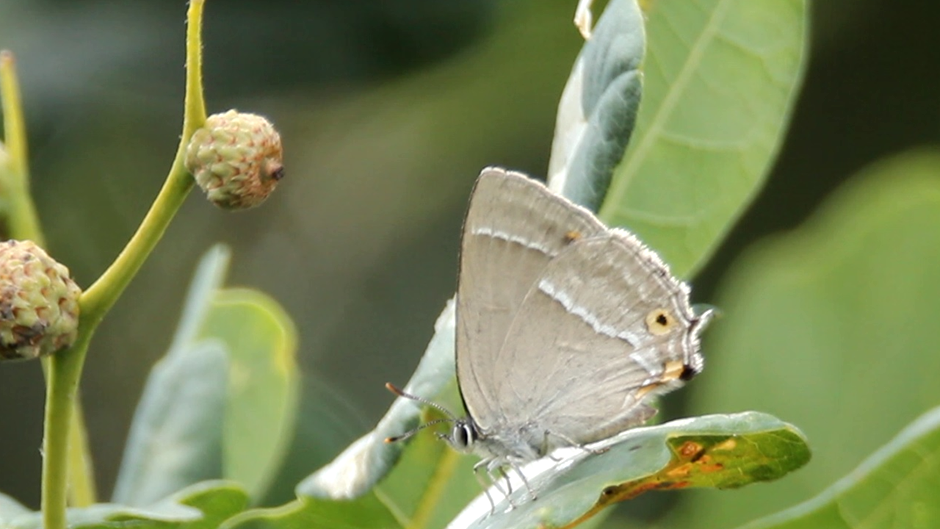Biodiversity at the Met Office
Working with the natural environment, we embrace the importance of protecting and enhancing biodiversity.
We recognise the need to promote and protect biodiversity at the Met Office’s Exeter head office and at our UK frontline sites by providing a suitable and sustainable refuge for local wildlife.
Biodiversity at our site
At our head office we have taken the following wildlife actions:
- introduced areas of wildflower meadow, improved the ponds, wetland and woodland areas;
- installed bat and bird boxes, bee hotels and reptile mats (for sheltering slow-worms);
- created hibernacula (hibernation sites) for reptiles and amphibians;
- created log and wood piles for shelter for overwintering insects;
- changed formal flower beds around the site to increase species diversity, and to provide nectar for insects through much of the year;
- organised monitoring programmes by staff volunteers to include the regular surveys of the butterflies, birds, bats, reptiles and fungi on site.

To date over 500 different species of plant, animal, insect and fungi have been identified at the Met Office’s site in Exeter, with new species being recorded by our staff each year. In July 2023 we recorded our first sighting of the purple hairstreak butterfly (above).
Wildlife through the seasons
Throughout the year the key species to be seen each day vary with the seasons.
Grahame Madge is a member of the Met Office Biodiversity Working Group: the wildlife-friendly volunteers who conduct surveys and offer advice on the management of the site. He said: “Within a relatively small footprint, The Met Office grounds create a variety of wildlife-rich habitats alongside a busy working environment. During our regular bird survey, I was delighted personally to add red kite to the Met Office species list – a bird which is still a comparative rarity in Devon.
“The wildflower meadow and the area around the ponds are the ideal locations to switch off from the pressures of a heavy workload. Listening to birdsong or the hum of bees is the perfect accompaniment to a busy day.”
Discover more about the butterflies, birds and slow-worms at the Met Office headquarters.
Biodiversity success: more than ten years and counting
In 2021, we celebrated the 10th anniversary of achieving the prestigious Wildlife Trusts’ Biodiversity Benchmark for our Met Office head office in Exeter. Only a handful of organisations have met this standard and we are the first public-sector body to do so. This achievement reflects our ongoing commitment to increase biodiversity both at our Exeter head office and frontline sites, while also reducing our overall environmental impact.
Commenting in 2021, Thirzah McSherry, Director of Marketing, Development and Communications at The Wildlife Trusts, said: "We’re delighted that the Met Office has cared for its land to The Wildlife Trusts’ Biodiversity Benchmark standard for a fabulous ten years – definitely something to celebrate. Their land now includes a meadow of wildflowers and grasses which many insects, birds and small mammals call home, as well as ponds which attract wetland wildlife such as newts, dragonflies and waterbirds – a wonderful result for wildlife."
Our biodiversity poster has more information about what we are achieving for wildlife.


